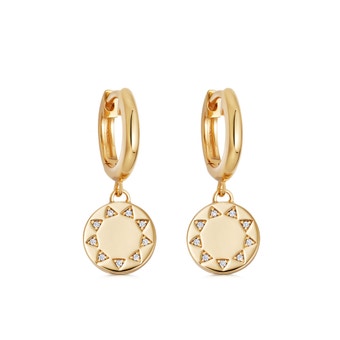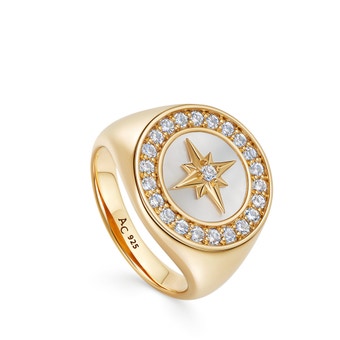The Midas Touch - A Guide To Gold


Whilst we are as likely to develop the ability to turn everything we touch into gold as we are to find gold at the end of the rainbow, the many myths and legends surrounding the allure of gold throughout history do at least demonstrate one united truth – a collective fascination with this gloriously gilded metal.
In today’s world this precious metal is still widely adopted due its unique properties making it suitable for a wealth of uses, not least in creating spectacular jewellery (which is where we come in).
A GOLD STANDARD
Gold can actually be found in a variety of colours but the most popular are yellow, white and rose gold, which are made using a mixture of pure gold mixed with different alloys such as copper and zinc.
The most widely adopted of all golds, the colour of yellow gold is determined by the proportion of pure gold to other metal alloys – commonly described as the carat. You can notice a marked difference between 24 carat gold, which is pure and has a strong yellow colour, and 9 carat gold which is 37.5% pure gold to other alloys.

9ct gold contains 37.5% pure gold (375 parts per thousand parts).
14ct gold contains 58.5% pre gold (585 parts per thousand parts).
18ct gold contains 75% pure gold (750 parts per thousand parts).
While popular in many cultures, as gold is a malleable material, pure 24 carat is generally considered too soft for use in much jewellery, particularly anything that is worn every day such as a wedding band.
The proportion of alloy versus pure gold consequently determines the durability of the gold as the less gold present, the more hardy the object.
At Astley Clarke, all of our Fashion Fine Jewellery collections are crafted from 14 carat solid gold.
PICKED BY A ROSE
The romantic and flattering hue of rose gold has become increasingly popular and a firm favourite amongst the fashion, jewellery and even beauty aficionados of today with designers from Diane Von Furstenberg, Alexander Wang, Charlotte Tilbury and of course, Astley Clarke, adopting it across their relative collections. It is usually made with a mixture of pure gold and other allows such as copper, which gives it the magnificent rose-reddish colour we all adore so much.

WHITE HEAT
White gold first became popular in the 1920’s when it was introduced as a more affordable option to platinum. Since then it has remained a popular choice and is widely used across all jewellery.

White gold is achieved by combining pure gold with alloys such as silver and palladium. Traditionally, nickel was used in white gold; however it is rarely used today as it can cause allergic reactions.
As the natural colour of white gold is a greyish colour, almost all jewellery is plated with a metal called rhodium, which is a member of the palladium family of metals. Rhodium is used to brighten the colour of white gold and is very white and very hard, but it does wear eventually, particularly on rings. It is a very common practice to have rings re-plated with rhodium, and most local jewellers will offer this service.
GOLD VERMEIL
Put simply, gold vermeil is the term used for a layer of gold plated over sterling silver. To be considered true vermeil, the gold must be at least 10 carat, at least 1.5 microns thick and plated on sterling silver (as opposed to brass or any other metals).

Vermeil has become a popular choice for premium jewellery designers looking to offer the desirability of gold jewellery, without the higher price tag. At Astley Clarke for example, our delightfully colourful Contemporary Collections are created using 18 carat gold vermeil and gemstones.
It is worth nothing though that while there is a place for gold vermeil in all of our jewellery boxes, it will tarnish and need re-plating over time.
Feeling inspired? Take a look at some of our most magnificent gold jewellery here.



